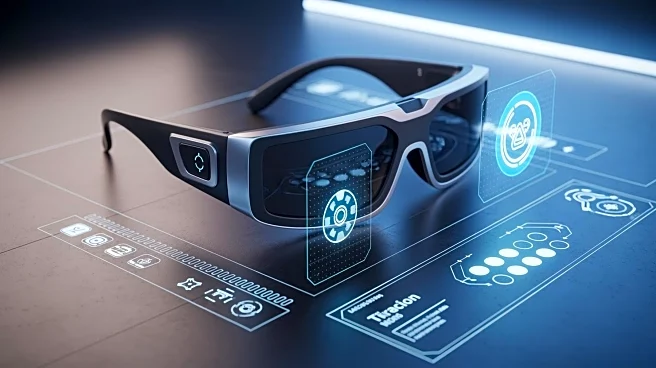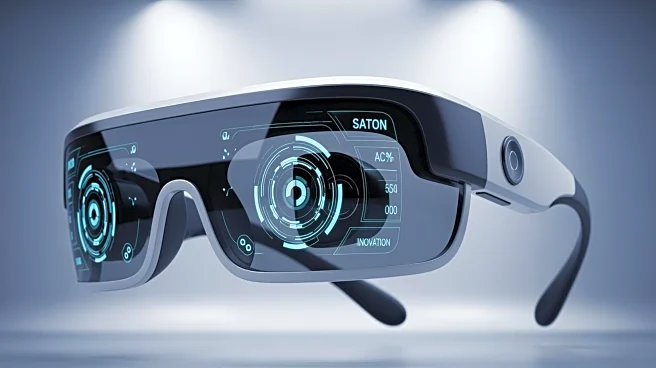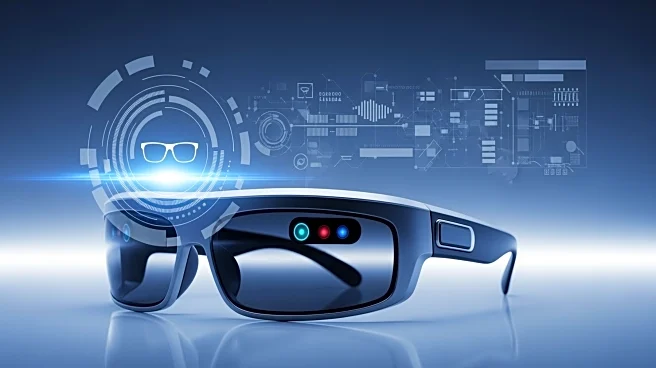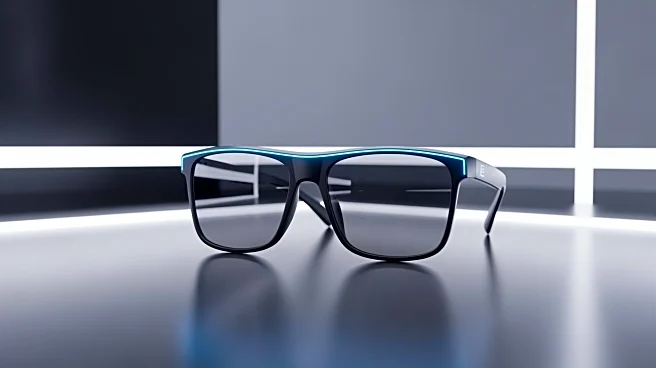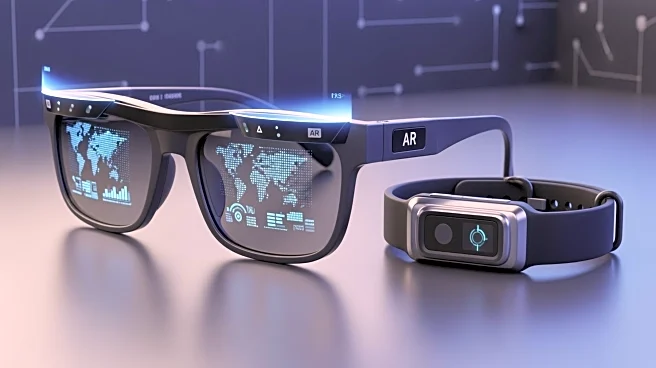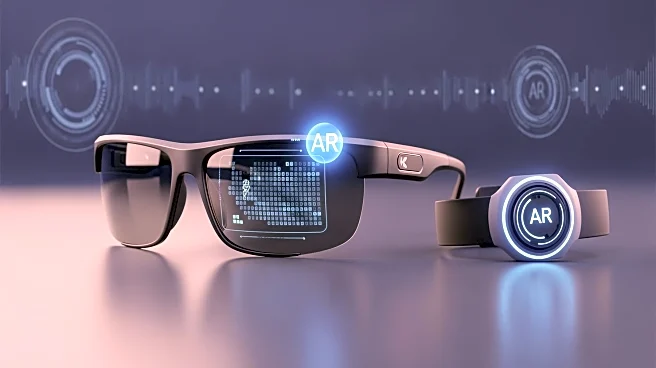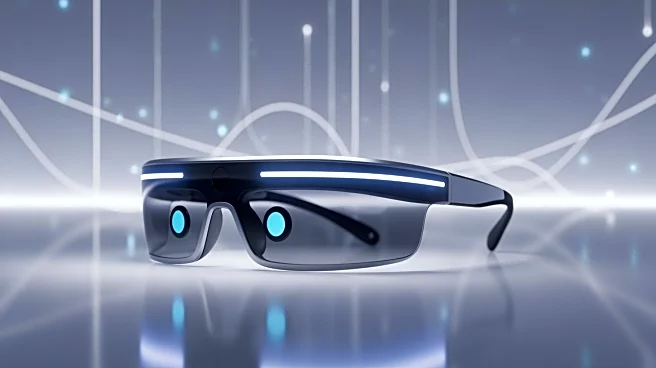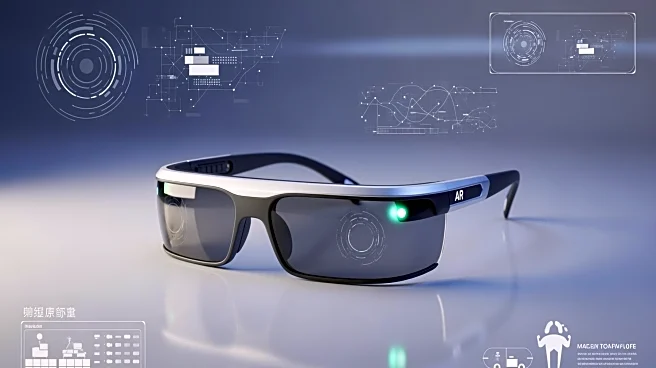What's Happening?
Smart glasses are becoming increasingly prevalent, with Meta's Ray-Ban Display smart glasses leading the charge. These glasses come with a unique wristband, the Neural Band, which uses electromyography
(EMG) to read electrical signals in the arm and fingers, translating them into device inputs. This innovative control method allows users to navigate the glasses' interface with simple gestures. Other companies, like INMO, are developing similar input methods using touch-sensitive smart rings. These advancements highlight the growing trend of integrating wearables with smart glasses to enhance user experience.
Why It's Important?
The integration of wearables with smart glasses represents a significant shift in how consumers interact with technology. This development could lead to more intuitive and seamless user experiences, potentially increasing the adoption of smart glasses in everyday life. The technology also opens new possibilities for applications in various fields, including augmented reality, gaming, and remote work. As companies continue to innovate, the wearables market may see substantial growth, impacting consumer electronics and tech industries.
Beyond the Headlines
The evolution of smart glasses and wearables raises questions about privacy and data security, as these devices collect and process personal information. Ethical considerations regarding user consent and data protection will become increasingly important as the technology becomes more widespread. Additionally, the development of more advanced control methods could lead to new accessibility solutions for individuals with disabilities.
